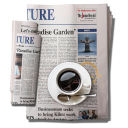|
R10 Vô Địch Thiên Hạ
Join Date: Feb 2015
Posts: 75,500
Thanks: 4
Thanked 3,925 Times in 3,452 Posts
Mentioned: 4 Post(s)
Tagged: 0 Thread(s)
Quoted: 22 Post(s)
Rep Power: 86
|
 How Headphones, Earbuds Can Slowly Harm Your Hearing Over Time
How Headphones, Earbuds Can Slowly Harm Your Hearing Over Time
Cranking up your earbuds as you listen to music or a podcast might be your favorite form of self-care.
However, it might not be the best for your hearing.
According to recent analysis, high levels of noise can affect hearing loss in the future.
Children, teens, and young adults may be particularly at risk if they often listen to many hours of music per day at volumes exceeding the public health limit of 70 decibels of average leisure noise exposure per day that’s recommended by The National Institutes of Health (NIH).
The World Health Organization (WHO)Trusted Source estimates that around 50 percent of people ages 12 to 35 are at risk of hearing loss due to prolonged and excessive exposure to loud sounds, such as music heard through personal audio devices.
“I think on a broader level, the medical and audiology communities, as well as the general public, don’t understand that significant hearing loss is not part of normal healthy aging, but largely represents noise-induced hearing loss,” Dr. Daniel Fink, board chair of the Quiet Coalition, told Healthline.
He compares this misunderstanding to the misconception that deep wrinkles and skin pigmentation are part of normal aging, whereas they largely represent solar or UV damageTrusted Source.
“Similarly, without exposure to loud noise, we should be able to hear well into old age, something generally not true in industrialized societies,” said Fink.
Health implications of hearing loss
Fink and audiologist Jan Mayes reviewed and integrated information from multiple articles in multiple disciplines to form conclusions about personal audio system usage.
A key takeaway was that people who use personal audio systems (also called personal listening devices or music players) linked to headphones or earbuds — so the content can be heard without disturbing others — are damaging their hearing.
“Especially for young people… personal audio system use is the major source of leisure noise exposure,” said Fink. “[When] they reach mid-life, probably in their early to mid-40s, they will be as hard of hearing as their grandparents are now in their 70s and 80s.”
In addition to losing some ability to communicate, hearing loss has been connected to cognitive decline.
According to a 2011 studyTrusted Source, compared to people without hearing loss, those who had hearing loss were at risk for developing dementia in the following ways:
people with mild hearing loss had nearly twice the risk of developing dementia
those with moderate loss had three times the risk
people with severe loss had five times the risk
Mary L. Carson, Au.D, licensed clinical audiologist, said research also shows that individuals with untreated hearing loss, over time, are at a higher risk for dementia.
She added that there are some promising studies that show that treating hearing loss with hearing aids reduces the risk of cognitive decline and dementia.
“However, as the old adage goes ‘an ounce of prevention is worth a pound of cure.’ Starting better hearing health habits now may be an investment in your long-term health, not only by preventing hearing loss, but also reducing your risk of cognitive decline and dementia as you age,” she said.
How to set healthy noise limits
Hearing loss from noise exposure can accumulate after one very loud exposure, or more often, slowly over time with bad hearing health habits, said Carson.
“We live in a noisy world, and many people are exposing themselves repeatedly to unsafe noise levels which may affect their long-term health… In my practice, we recently saw a young adult with a perforated eardrum from listening to music with earbuds too loudly,” she said.
Here are ways to keep your ears safe and sound:
Keep sound to 70 dBA
The NIH explains that sound is measured in units called decibels, stating that, “Sounds at or below 70 A-weighted decibels (dBA), even after long exposure, are unlikely to cause hearing loss. However, long or repeated exposure to sounds at or above 85 dBA can cause hearing loss.”
“A very good rough indicator is that if a person has to strain to speak or to be heard over the ambient noise, that’s more than about 75 decibels,” said Fink.
For devices, it’s hard to know what the decibel output is, so he suggests using your device at the 50 percent setting, as well as cutting back on your listening time.
Carson points out that safety options exist for earbud use, but even these options require parental or consumer monitoring.
For example, she said on iPhones, use the ‘Hearing’ application in the Control Center to check your headphone audio level.
“In this app you can see your average listening level, and monitor to ensure you are staying under the 70 dBA recommended average,” said Carson.
Volume-limited headphones for kids are another option, though Carson said they typically have volume limits set at around 85 dBA and still require parental monitoring of use time and volume setting.
Fink agreed, noting that that headphones for kids using the 85 dBA volume limit are safer than headphones without a volume limit, however, they’re not safe for hearing.
“[Hearing] loss is especially bad for children and teens because they need to be able to hear to be able to learn, socialize, and hearing loss impacts social development and educational success and lifetime earnings,” he said.
Use a sound level meter app
There are many free or inexpensive sound level meter appsTrusted Source, which help to determine how noisy your environment is.
The National Institute for Occupational Safety and Health (NIOSH) offers a free one.
“A smartphone sound meter app will help one learn what’s loud and what’s not,” said Fink.
Wear hearing protection
Many types of hearing protection exist that are designed to protect you from the noise you’re around.
For example, Carson said musician-filtered hearing protection can help maintain the quality of music while still providing safe protection.
“Hearing protection comes in many forms — earmuffs, foam plugs, reusable non-custom plugs, and custom fit hearing protection. Talk to your hearing health professional to get help finding the protection that’s best for your intended use,” she said.
Know the warning signs of hearing loss
The most common first signs of hearing loss include difficulty hearing in noisy environments and feeling like you’re hearing people, but just can’t understand what’s being said, explained Carson.
She said tinnitus, or ringing in the ears, is also often an early sign of damage to the auditory system and a warning sign for hearing loss.
Get your hearing checked regularly
If you’re over age 50 or exposed to noise at unsafe levels, Carson recommends getting your hearing checked annually.
“If you are noticing any changes in your hearing, or new or worsening ringing in the ears, you should get your hearing checked right away,” she said.
|














 How Headphones, Earbuds Can Slowly Harm Your Hearing Over Time
How Headphones, Earbuds Can Slowly Harm Your Hearing Over Time







